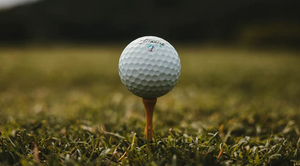Why Are Blades Harder to Hit?
Blades provide excellent qualities that would be an asset to any golfer, pro, or beginner. However, to master the blade, you’d first need to be an advanced enough golfer. This iron's intrinsic design means it’s a more challenging club to master. However, that doesn’t mean it’s impossible.
These pieces of equipment are notoriously more difficult to hit due to their high center of gravity and forging process. While beginners may want to avoid them, blades are valuable assets to advanced or pro players. Once you can learn to hit the ball every time with a blade, it's hard to ignore its shining qualities.
Are Blades Harder To Hit?
The short answer is yes. Typically, blades are tricker to hit than the cavity back irons due to their narrow face; the face makes it harder for a beginner to hit the golf ball with a nice square hit. Classic blades are more complicated to strike than muscle backs, as muscle backs have larger clubheads and wider soles.
Beginners will generally find that using a muscle back is more accessible than the classic blade, but it would be best if beginners steered clear of both at the start of their golfing journey. Other clubs, or cavity back irons, are more suitable for beginners looking to make their first steps onto the green. Classic blades can require years of practice before being used effectively to control the ball’s flight or make solid contact with the ball.
Blades Are Less Forgiving
Blades have a higher center of gravity than other clubs, which is excellent for those who want a lower, more fierce ball flight. However, this lower center of gravity makes the blade less forgiving for those not used to this weighting.
Likewise, the head size of the blades is far smaller than other clubs. As a rule, the bigger the club head, the more designers can weave technology into it. In layperson’s terms, the bigger the club head, the more the designer can play with the design to make life easier for the golfer. If golfing is made more accessible for the hitter, the club must be forgiving.
Although other clubs, such as cavity back irons, are less accurate than the classic blades or the muscle backs, they’re more forgiving, meaning you can hone your technique without making life harder on yourself. While the blade irons produce precision shots for an experienced golfer, other clubs allow beginner golfers to hit the ball further, making it easier to hit off-center and feel motivated.
As mentioned above, blades have a higher center of gravity, so their weight distribution varies from other clubs. Compare it to the cavity back iron: the iron is designed to shift the weight low on the club face, which in turn helps launch the ball higher. Its weight is centered out to the perimeter toward the heel and toe of the club, preventing the club from twisting on off-center strikes. However, with the different weight distribution in blades, the ball won’t launch as high, and if the golfer doesn’t have the skill to hit the ball square, the club face will twist more on bad strikes.
Blades Have a Greater Power and Direction Drop Off
When hit correctly, blades give golfers more control, but the power and direction drop off causes blades to suffer. Any off-center strikes will lose power at a quicker rate than other clubs. Therefore, if you hit the ball from different parts of the blade’s club face, you'll find it challenging to control or understand distance.
While more advanced, and even pro, players use blades due to the greater control, even pro players may struggle to use blades effectively. With this in mind, it’s easy to understand why beginners should avoid blade clubs, at least to begin with, so their motivation and skill can grow rather than deplete.
Are There Any Benefits of Using Golf Blades?
Many pro golfers wouldn’t use blades for no reason. So while they’re a tricky beast to master, they’re not without their benefits.
Better Feedback
Manufacturers forge the blades by tightly binding the steel together, and unlike other clubs, the feedback on these smooth blades is better. Since the blades are thinner, they’ll vibrate if you hit the ball incorrectly. The “feedback” from the blades reverberates in the golfer’s hands, meaning you can alter your swing in the future.
More Consistent
As with the feedback, the forging process of blades means that the blade iron can produce more consistency (compared to other clubs). When the edge strikes the ball well, the ball’s speed will remain relatively the same. Knowing the feel and speed the ball will travel on a good hit makes the blade reliable for those well-versed in using them.
More Control
With more consistency comes more control. Due to the forging and design, the blades offer more control over the trajectory of each shot. Trajectory might not seem crucial to the average golfer; however, pro golfers must understand every metric to ensure they win.
Easier To Shape
Regarding blades, its design makes it intrinsically less forgiving than other clubs, and it won’t give as much distance. However, blades do provide a more remarkable ability to “work the ball,” meaning that the ball is easier to shape from left to right or vice versa.
More advanced players will prefer this quality to greater forgiveness or distance. They’ll generally be better strikers and take the ability to shape over a club that will help carry the ball further. For example, it may allow them to attack flags better and shape the ball on the green to their advantage.
Look Like a Pro While Hitting Blades — Shop Stitch Golf!
Whether a beginner or an advanced golfer, don’t hesitate to improve your golfing skills today! See how Stitch Golf can help you get out on the green in style



